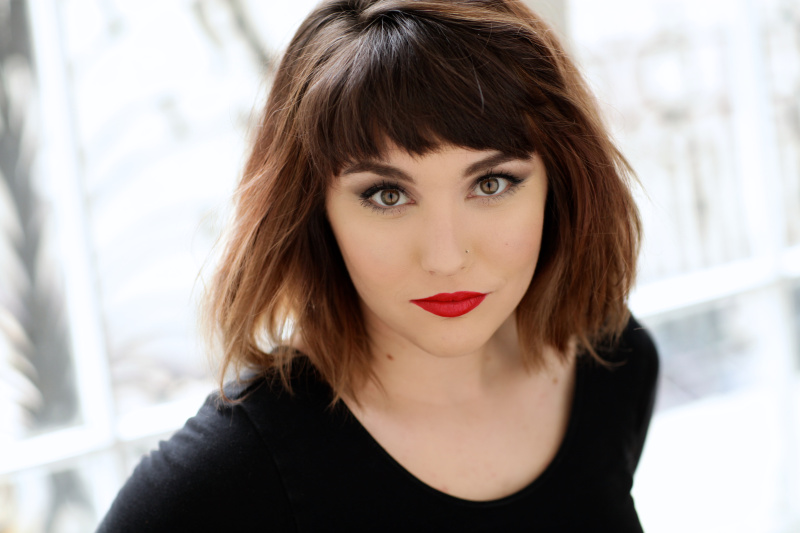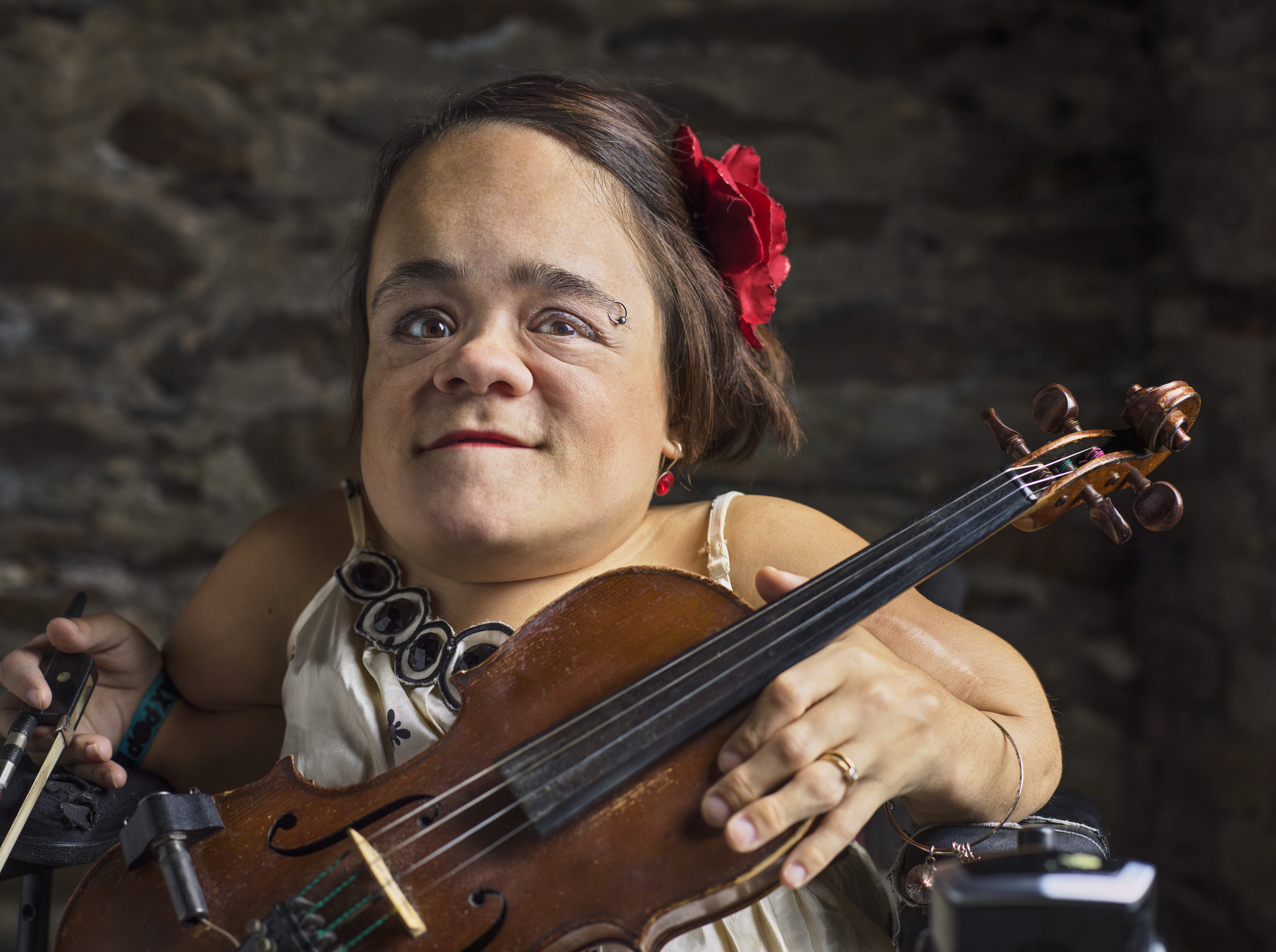 Gaelynn Lea leapt onto the national music scene when she won NPR Music’s Tiny Desk Contest in 2016. Since then, the singer, violinist, songwriter, and public speaker has been touring full-time, sharing her unique mix of haunting original songs and traditional fiddle music with audiences all over the United States and around the world. Here, she talks about her musical background, the memoir she is writing, and why she feels strongly about making music venues accessible for performers and audiences.
Gaelynn Lea leapt onto the national music scene when she won NPR Music’s Tiny Desk Contest in 2016. Since then, the singer, violinist, songwriter, and public speaker has been touring full-time, sharing her unique mix of haunting original songs and traditional fiddle music with audiences all over the United States and around the world. Here, she talks about her musical background, the memoir she is writing, and why she feels strongly about making music venues accessible for performers and audiences.
VSA & Accessibility: Where are you currently based?
Gaelynn Lea: Duluth, Minnesota
VSA & Accessibility: What is your area(s) of artistic practice?
Gaelynn Lea: Music, writing, and public speaking
VSA & Accessibility: What training or experiences have shaped you as an artist?
Gaelynn Lea: I began learning the violin 25 years ago after a creative music teacher helped me to adapt a playing style that suits my frame. I hold my instrument upright in my electric wheelchair like a tiny cello and I hold my bow like a bass player. I played classically all the way through high school, thanks to some excellent orchestra conductors and private lesson teachers. During college, I got very involved in Celtic and Old Time fiddling, which is pretty much all I played for the next several years. It was at this point that my friend Andy Gabel asked me to form a folk duo with him in 2006. This ignited a love for improvisation that only expanded when my friend and mentor Alan Sparhawk introduced me to the looping pedal in 2011. A looping pedal is a piece of gear I control onstage that records what I am playing live and loops it back. I can create multi-layered compositions in real time on stage and this is hugely liberating to a classically trained musician. Exposure to the looping pedal also sparked songwriting for me, somewhat spontaneously, in 2012. So along the way I have been writing my own version of folk songs that explore the contrasting realities of life: birth and death, grief and joy, anger and forgiveness. In 2016, I entered and won NPR Music's Tiny Desk Contest by submitting my original song, "Someday We'll Linger in the Sun" and that gave me a lot of national exposure. This launched my current musical career. In the past three years, my husband and I have been touring full-time; since the Tiny Desk Contest, I have played over 600 shows in 43 states and 8 countries. I also love to do speaking engagements about disability rights, finding inner freedom, and accessibility in the arts.
VSA & Accessibility: What current projects you would like to share with VSA members?
Gaelynn Lea: I released a new single and music video this fall, called The Long Way Around. Also, I am currently working on a memoir about my touring adventures and disability advocacy that I plan to release in 2022.
VSA & Accessibility: Who or what is currently inspiring you in your artistic pursuits?
Gaelynn Lea: Musically, I am currently inspired by instrumental pieces and the way they can create a mood and even visual images in the mind's eye so effectively. I am hoping to work on some instrumental music in the next year or so. But what I am most excited about is working on this memoir. I am incredibly inspired by the idea of disability as diversity, of changing the narrative around disability so that it is more authentic and empowered in mainstream culture. I want my book to be a small part of this wider shift.
VSA & Accessibility: How does disability influence your work?
Gaelynn Lea: I think everyone's life experience shapes the music they write. So having brittle bones means that one minute life can be going along swimmingly and the next minute you break a bone and are pretty much laid up for six weeks. This teaches you about impermanence and even your own mortality at a pretty young age, and I know it's colored my songwriting. A couple songs are more directly about disability, like "Bird Song" and "I Wait," but usually I write about broader concepts like love, sorrow, or being in the present moment.
Although disability is a huge part of who I am and it has certainly shaped me as a person, I also carry other identities and interests. So music for me is not wholly linked to my disability—it's a passion for me that helps me feel connected to my higher self. Performing gives me a kind of energy and grounds me in a way nothing else does. Writing music, too, comes from a place that almost seems super-conscious. Connecting to your creative spirit transcends the physical body, so in that way music lives apart from my disability.
However, because I have a physical disability and use an electric wheelchair, I do unfortunately face additional challenges when it comes to performing and touring as a full-time, professional musician. Often venues are not accessible to me or to the paying customers with disabilities, which limits the places I can perform and thus earn my keep.
I used to be more flexible about accessibility and I would do shows at venues where I had to be lifted onstage and such. But about a year ago I finally took a stand and said I would only play at spaces with accessible entrances, bathrooms, and that I wouldn't have my chair lifted on stage. So either the venue has to have a ramp to the stage or I will play on the floor. I think lifting my chair sends a negative message—that there's not truly equal access for disabled artists.
Another way I have noticed my artistic career and disability intersect is in the realm of representation. Disabled voices are rare to nonexistent in mainstream culture and thus venues and festivals often do not think to seek out disabled artists for their regular programming, even if they are otherwise committed to diverse representation onstage. I believe it is so important that we include disability in our thinking of diversity. Rather than pity or fear it, we should celebrate it in our culture. Although much of the disability community already embraces this concept of Disability Pride, much of mainstream society continues to cling to outdated modes of thinking about physical, mental, and behavioral difference. The arts is a great place to move society forward in this way, by connecting with people’s emotions, dreams, and appreciation of beauty to change hearts and minds. That's a major reason I want to write this memoir, to increase representation and challenged outdated concepts about disabilities!
VSA & Accessibility: What advice would you share with emerging artists with disabilities?
Gaelynn Lea: Not everyone will be famous. Actually, a better way to put that is: almost nobody will be famous. But truly, that’s not the point of music. Music is a healing medium that can touch the lives of almost anyone…and that is the point. All the stuff you worry about (Who is my fan base? What if I am not cool enough? What if no one comes to my shows?) dissolves instantly when you realize that music is simply a gift that we did not create and that is much, much bigger and more valuable than any label or measure of success. Performance and “fame” are just tiny, tiny pieces of the wonderful body that is music.
But obviously lots of people do love to perform and want to do it for a living. It can be frustrating when you feel like your career is moving at a glacial pace. Here I have always tried to remember that all I can do is work hard and then whatever happens, happens. My motto regarding my career in music is, “Act like it depends on me, but pray like it depends on God.”
Action is key; going through the motions is truly half the battle. If you want to be a musician, play as much as you can—open mics, bars, dinner gigs. All experience is good for honing your craft and getting your name out there. Because as cliché as it sounds, you have to start somewhere. Fate will not be able to find you if you are hiding away in your room; it will seek you out in the field as you fight for what you love.
Specifically for disabled artists, I would say never underestimate the impact you'll have by making all your shows accessible. Yes, it will limit where you can play temporarily, but if each of us makes accessibility non-negotiable, it will speed up the much-needed change we seek. You matter. You deserve equal rights. You’re not mean or difficult or picky just because you want to play at spaces that are accessible to you and other disabled music lovers—you’re just asking for the same rights others enjoy. Remember that if you fight for your rights today, you can make the world a little more accessible for the next generation of disabled musicians.
Learn more about Gaelynn Lea on her website: https://violinscratches.com/. You can follow her on Facebook, Twitter, and Instagram @GaelynnLea, and on YouTube at https://www.youtube.com/user/gaelynnlea.
 Jessica Thom describes herself as an artist, writer, and part-time superhero. The website she started with collaborator Matthew Pountey, Touretteshero, just celebrated its tenth anniversary. Thom, who is based in the United Kingdom, talked with us on March 20, 2020, about her own work, her experience as a disabled artist working remotely, and ways she is engaging creatively during the the COVID-19 pandemic.
Jessica Thom describes herself as an artist, writer, and part-time superhero. The website she started with collaborator Matthew Pountey, Touretteshero, just celebrated its tenth anniversary. Thom, who is based in the United Kingdom, talked with us on March 20, 2020, about her own work, her experience as a disabled artist working remotely, and ways she is engaging creatively during the the COVID-19 pandemic.
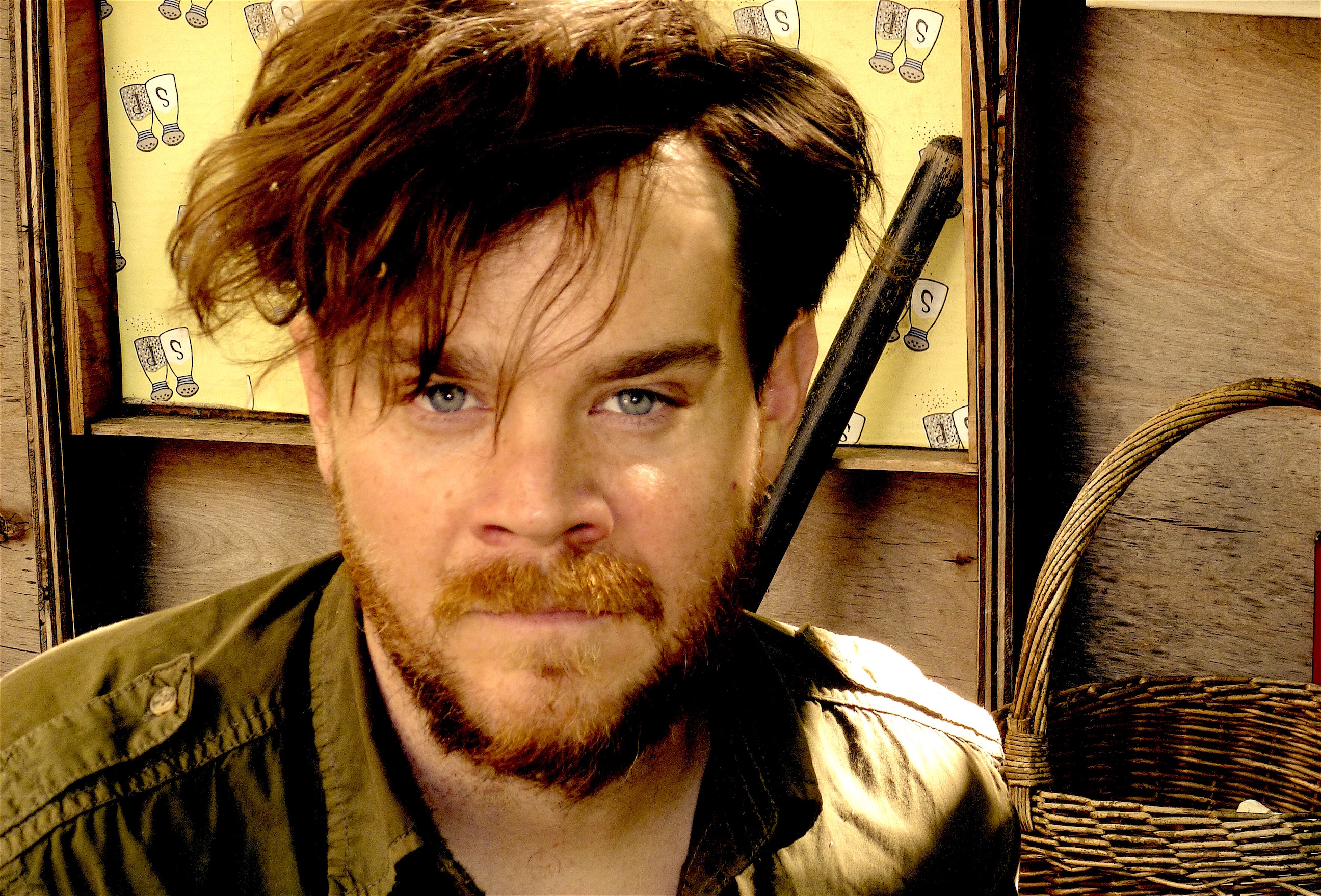 Playwright
Playwright  Gaelynn Lea leapt onto the national music scene when she won NPR Music’s Tiny Desk Contest in 2016. Since then, the singer, violinist, songwriter, and public speaker has been touring full-time, sharing her unique mix of haunting original songs and traditional fiddle music with audiences all over the United States and around the world. Here, she talks about her musical background, the memoir she is writing, and why she feels strongly about making music venues accessible for performers and audiences.
Gaelynn Lea leapt onto the national music scene when she won NPR Music’s Tiny Desk Contest in 2016. Since then, the singer, violinist, songwriter, and public speaker has been touring full-time, sharing her unique mix of haunting original songs and traditional fiddle music with audiences all over the United States and around the world. Here, she talks about her musical background, the memoir she is writing, and why she feels strongly about making music venues accessible for performers and audiences. 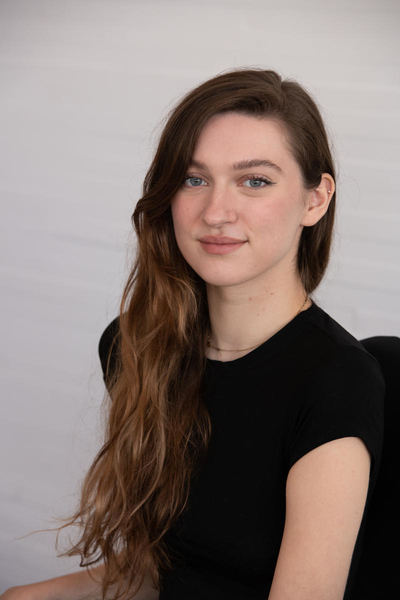 Michelle Miles may have just graduated from college in May, but her career in the arts is already off to a bright start. Miles was recognized with the Grand Prize for the 2019-2020 VSA Emerging Young Artists Program. Her work hand model will be featured in the exhibition
Michelle Miles may have just graduated from college in May, but her career in the arts is already off to a bright start. Miles was recognized with the Grand Prize for the 2019-2020 VSA Emerging Young Artists Program. Her work hand model will be featured in the exhibition 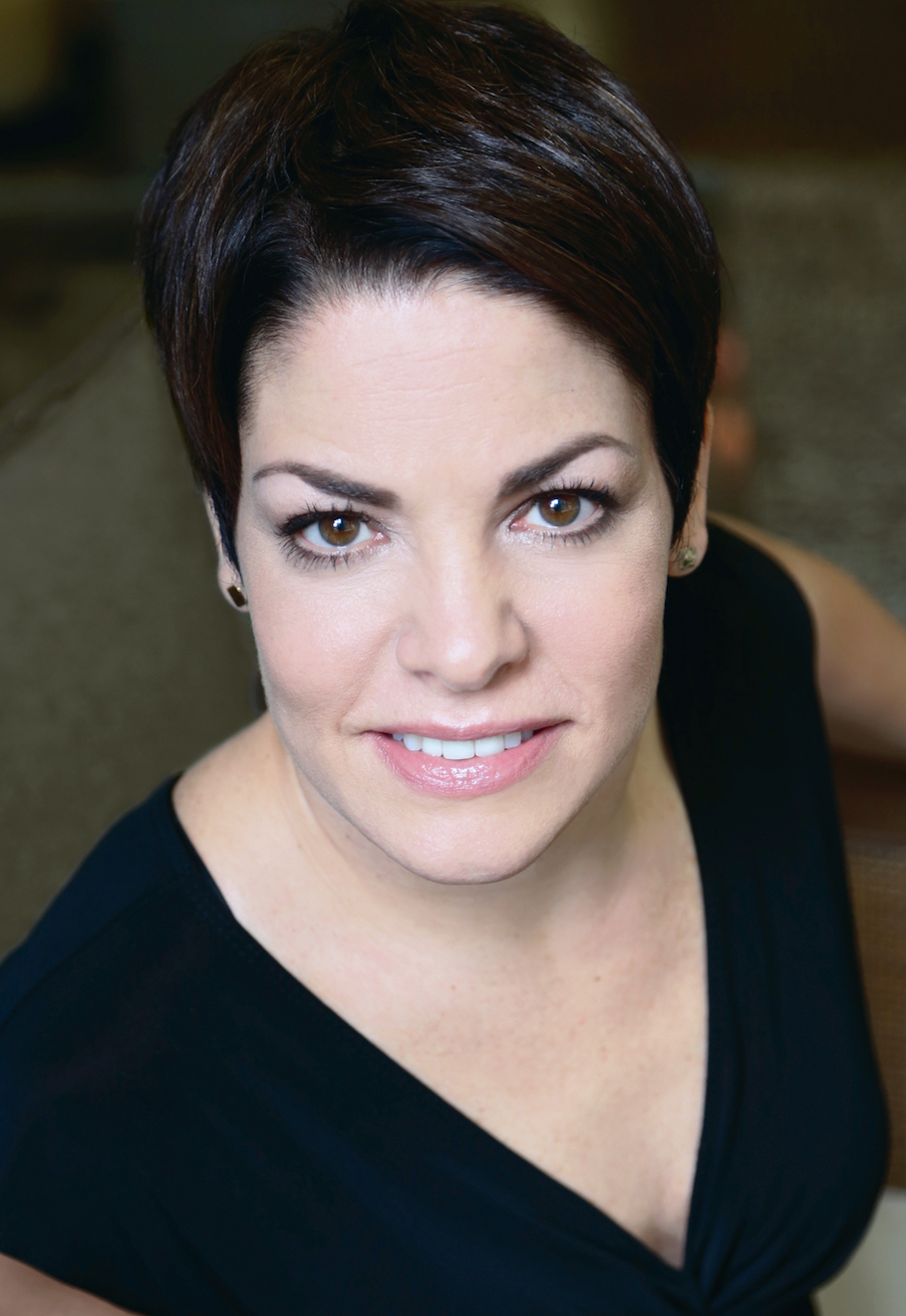 Christine Bruno is an actor, director, teaching artist, and disability inclusion consultant for the entertainment industry. She holds an MFA from the New School and is a lifetime member of The Actors Studio. Christine has worked extensively in theater, film, and television in the US and abroad. She sits on the New York board of SAG-AFTRA and is chair of the union’s New York Performers with Disabilities Committee. Christine can be seen in the documentary series ABLE, streaming now on Amazon Prime.
Christine Bruno is an actor, director, teaching artist, and disability inclusion consultant for the entertainment industry. She holds an MFA from the New School and is a lifetime member of The Actors Studio. Christine has worked extensively in theater, film, and television in the US and abroad. She sits on the New York board of SAG-AFTRA and is chair of the union’s New York Performers with Disabilities Committee. Christine can be seen in the documentary series ABLE, streaming now on Amazon Prime. Alice Sheppard’s
Alice Sheppard’s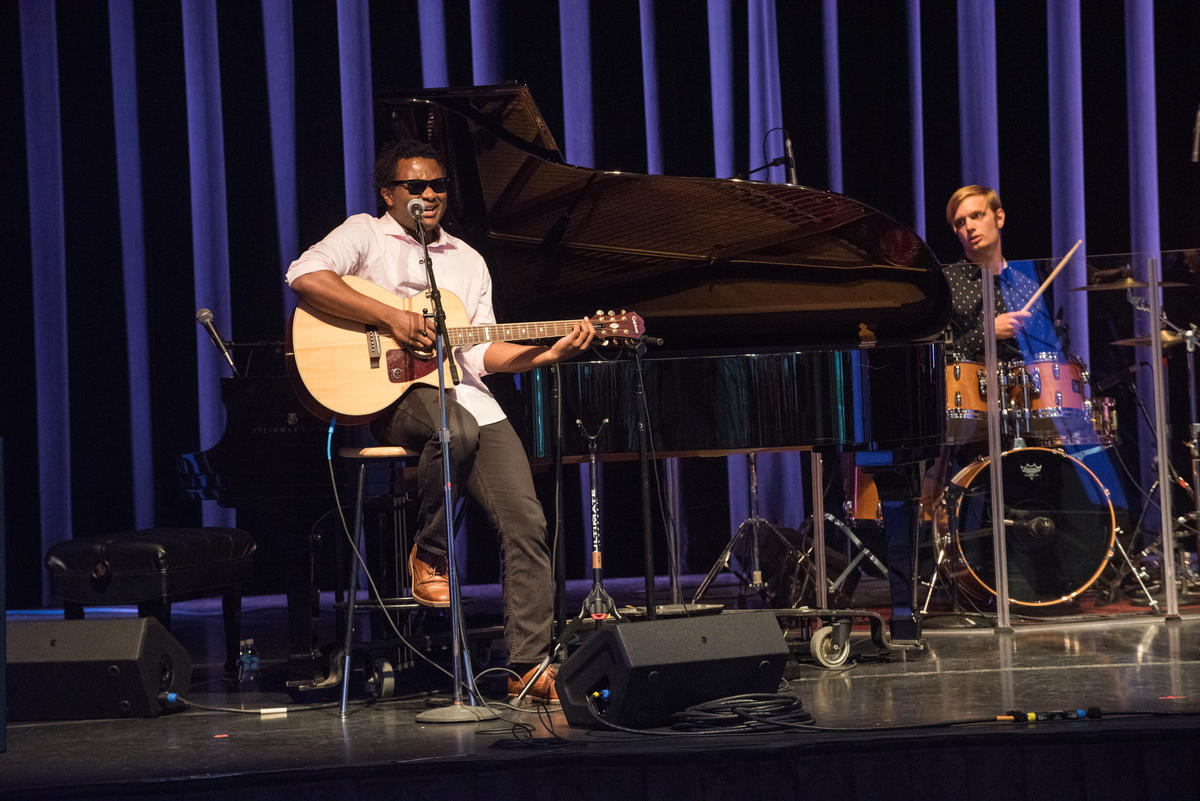 Many people know Blessing Offor from his impressive appearances on the television shows The Voice and Platinum Hit. But before television audiences fell in love with him, Offor was a 2010 VSA International Young Soloists Award winner for his piano and vocal skills. Today, the Nashville-based musician is still writing and performing his infectious original songs, and urges other emerging artists with disabilities to decide to be the best at their artistic practice with “no qualifiers.”
Many people know Blessing Offor from his impressive appearances on the television shows The Voice and Platinum Hit. But before television audiences fell in love with him, Offor was a 2010 VSA International Young Soloists Award winner for his piano and vocal skills. Today, the Nashville-based musician is still writing and performing his infectious original songs, and urges other emerging artists with disabilities to decide to be the best at their artistic practice with “no qualifiers.” Tara Wray
Tara Wray